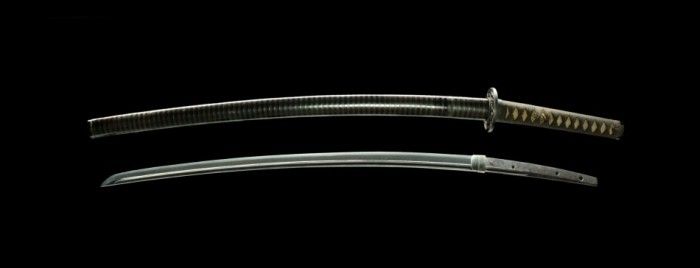The East is a delicate matter, especially with regard to military art. Asia has presented the world with many examples of magnificent edged weapons, among which are the traditional Japanese katana and many others, no less amazing
swords.
It is worth noting that even in China, in the homeland of Kung Fu, the cult of the sword was not as developed as in Japan. The sword was considered the soul of a samurai, and its loss was equated with a loss of pride. Such a reverent attitude to weapons has deep historical roots. Only in Japan there is a periodization of the types of swords. For example, Japanese weapons before the year 900 belong to the ancient period and were obviously of Chinese origin. At that time, the sword cult in Japan was only in its infancy, and the most famous master was Amakuni from Yamato, who lived in the 8th century. In the 16th century, the period of old swords lasted, when a new class appeared in society - samurai. With the advent of the military class, Japanese edged weapons became a matter of pride and an indicator of the status of the owner. During this period, the legendary master Muramasa lived and worked, who forged swords of such sharpness that they could cut a sheet floating on the water.

Until the XIX century, the period of
"new swords" lasted
. Now the sword itself no longer had a combat significance, becoming only an element of the costume. Therefore, in this period of unprecedented prosperity, the decoration of weapons reached, and the sword turned into a work of art. Now there is a period of "modern swords". Traditional Japanese weapons, especially cold weapons, are endangered. Therefore, Japan is making every effort to preserve the ancient art of forging unique swords.
By the way, katana is far from the only Japanese blade. So, among other types of chopping-cutting Japanese weapons, it should be noted tati - a large sword whose blade length exceeds 61 cm. This sword was used for horse fighting and had a relatively large bend. Since the 15th century, the katana has replaced tati. Its blade is longer and can reach 80 centimeters in length. Today it is the most popular blade among collectors. Paired with katana, a short wakizashi blade is used. Together they form a daiso set. Wakizashi were indispensable in battle in a narrow space, and were also used in several fencing techniques along with katana. The samurai knife, tanto, was used for both military and civilian purposes.

Forging blades and working with metal has always been considered a sacrament, and the profession of a blacksmith was revered by all nations. However, the Japanese outdid everyone. Being a subject of worship, Japanese weapons, especially samurai swords, were never forged for the future. A master could start forging a sword only if he received an order from a samurai. In the forging process, several layers of steel were used, as a result of which a unique pattern appeared on the blade. It was he who was considered a measure of the cost of the blade and the quality of the master. This pattern is called jamon.
The blade has not only a modest combat frame, but also a ceremonial version. The guards were also collectible, along with other elements of the sword. Today, Japanese weapons can be bought in various places, but the advantage is still better to give to trusted suppliers and dealers.